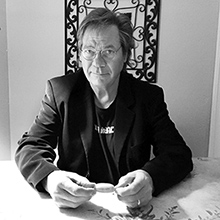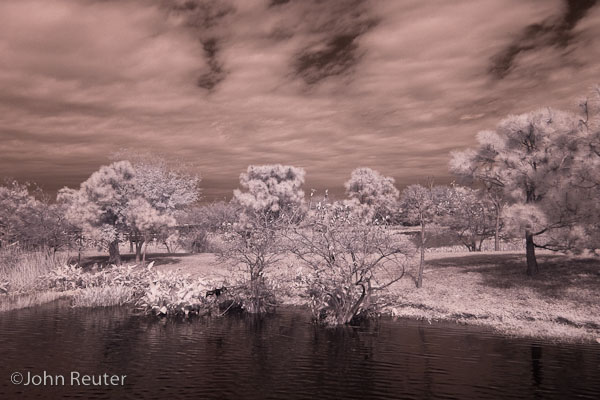Reinventing Yourself When you Least Suspect It, or How I Became a Landscape Photographer, by John Reuter
Even though he began to run the 20×24 studio in 1980, John did not begin making image transfers on the camera until 1983.
It wasn’t though he did not try, the early attempts were failures, most of the dyes would not stick to the watercolor paper, it was difficult to control the large floppy negative, and delivery of the film was much slower with the 20×24 system than it was with 8×10. But every six months or so he kept trying, but still was unable to perfect the process to the level of what he could achieve with 8×10 film. It took a change of aesthetic approach to finally break through. Rather than fight the inconsistencies and idiosyncrasies of the process John decided to embrace them. Allowing the process to proceed in a “controlled failure” John sought out transfers that had peeling shadows and rough areas. These became starting points for substantial reworking with pastel, dry pigment, charcoal and graphite. Much of the pigment was ground in with sandpaper and the paper surface scratched with metal brushes, all to achieve an expressive blend of photographic image, collaged elements and the colored pigment. This body of work moved through the Androgyny series of 1987 to the Pere La Chaise series of 1988-92 and John’s first digital collage imagery of 1993-1997. Throughout it all the Image Transfer process provided a vehicle for painterly expression designed to augment the narrative of the images.
John Reuter was one of the earliest artists to utilize Polacolor Image Transfer. Taught the technique by artist and friend Rosamond Purcell in 1978, Reuter began shooting 8×10 in 1980. As he had with his SX-70 work Reuter used the Image Transfer process as a starting point of combining photography, painting and collage. For much of this series he made use of an airbrush to apply the paint, generally isolating the figure and changing the context of the original scene. The early images were photographed with a Deardorf camera and 300mm lens, but by the end of the series Reuter switched his image capture to a Panasonic VHS video camera. With this video system, Reuter would shoot a sequence of images and freeze playback. He would then render the image by photographing it off of the video monitor. In a sense this was his earliest digital imagery.
In 2003 I was asked to write a piece for Polaroid about the instant back they had developed for the venerable Holga camera. What began as intrigue soon blossomed into full fledge love and I photographed with it exclusively for a year. One small problem, I have never regarded myself as a landscape photographer and here I was confronted with images I liked just the way they were. Ok, I tweaked them in Photoshop and made them brown (I tried so hard to keep them gray) but for the first time I did not blend them into collages as I had always done with landscape images I took. The response was interesting, people responded very positively and it encouraged me to consider landscape imagery an essential part of my aesthetic. I haven’t turned away from my collage based painterly imagery but this work is now an essential part of my thought process.



.jpg)

















.jpg)



















.jpg)
















.jpg)






















